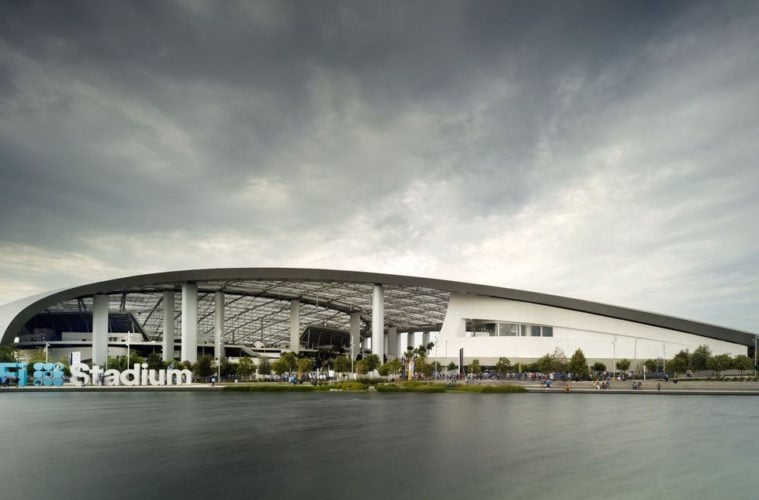With Inglewood’s SoFi Stadium playing host to Super Bowl LVI, more than 70,000 fans will descend upon the newly-minted stadium for the first time, and experience what Rams and Chargers fans have all season.
The awe-inspiring 3.1-million-square-foot stadium architectural marvel is now the largest stadium in the NFL, so much so that it is actually three venues in one, considering it also houses the 3-acre American Airlines Plaza and the 6,000-seat YouTube Theater.
One of the first things visitors will notice when arriving at SoFi Stadium is the canopy-like shell that blankets the stadium, giving it a rooftop element, while still being open-air. The unique roof concept is a first of its kind, as entertainment venues have always been either roofed or open, but never both at the same time.
The perforated aluminum shell is a monster of its own, never actually touching other parts of the stadium, and serving multiple purposes that may not be immediately apparent to the naked eye.
SoFi’s location kept lead designer Lance Evans on his toes, having to think outside the box for multiple obstacles. One of the most prominent challenges came from its proximity to LAX.
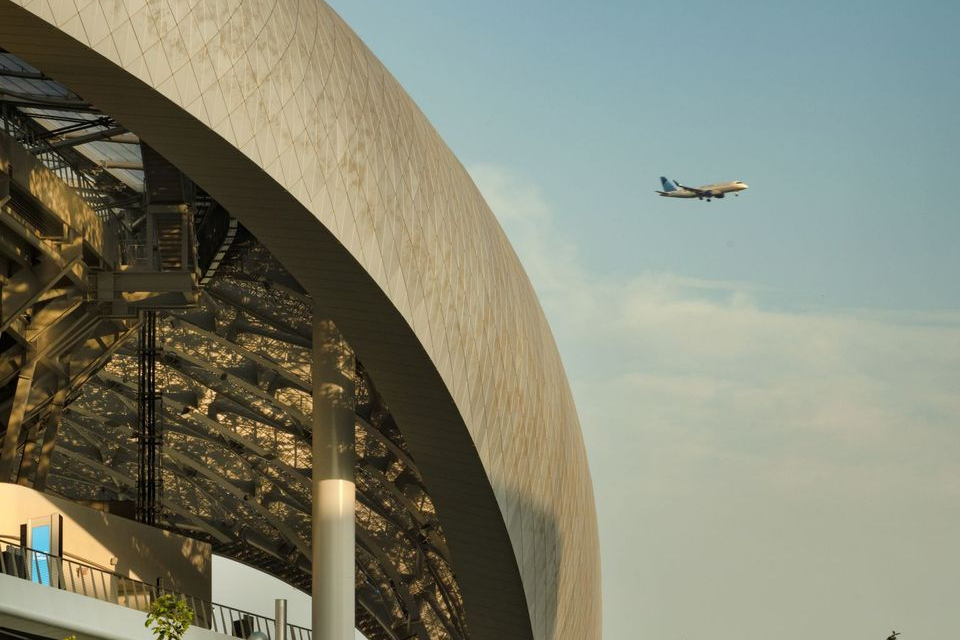
An airplane flies over SoFi Stadium on its way to LAX. (Nic Lehoux/HKS)
While SoFi’s location makes it a welcome sign for travelers flying in, the fact that it was built so close to LAX meant the design team was working with height limits due to zoning laws.
Their answer to not being able to build a towering structure was to build the bulk of the stadium underground.
“With that proximity to LAX, it actually required us to embed the field 100-feet below grade,” Evans said in a press conference centered around SoFi Stadium’s design. “We wanted to do that in a way that the design was able to embrace and embody the natural environment and landforms and climate around Southern California. So, the building is almost entirely, passively ventilated.”
Geographically, the stadium sits between LAX’s north and south runways, which means travelers can often experience one of SoFi’s most lavish features, the video projection atop the shell.
Those who have seen the promotional video for the Super Bowl halftime show may have noticed an image projection coming from the SoFi rooftop. That was not the product of commercial editing, but instead a highlight of the shell’s 15,000 LED fixtures, which can project not only images, but live video of the game as it is being shown on the big screen within.
“If you think about creating a global stage and having the ability for millions of people who fly into LAX every year, their first really true impression is the roof on this building,” Mark A. Williams, global director of venues at HKS Inc., said. “It’s very ‘touchdown’ into Los Angeles and southern California, really their first true experience is looking down on this stadium. That just shows the power of the site.”
The panels on the rooftop are not exclusively for show, however, as they are constantly opening and closing, adjusting to the daily climate.
If a given day emits harsh UV rays, the panels not only will block 65% of the light, but adjust its panels in a way to create an evenly lit environment and do away with shadows that are typically consistent with open-air stadiums. Similarly, if an event is going on during a rainy day, the panels will adjust and close so that neither the rain nor wind become an issue.
The seats themselves also were designed in a way that somewhat controls the natural air coming from the beaches. The positioning of the seats works together with the roof panels to create the most optimal conditions for fans and performers alike.
“There’s a series of operable panels on the roof that can open and close… to really turn the roof into a machine, to promote the best version of an outdoor stadium that could exist,” Evans said. “The goal for us was to amplify the fan experience at SoFi. That drove almost every decision we had from a design perspective, with the seating bowl design at SoFi.”
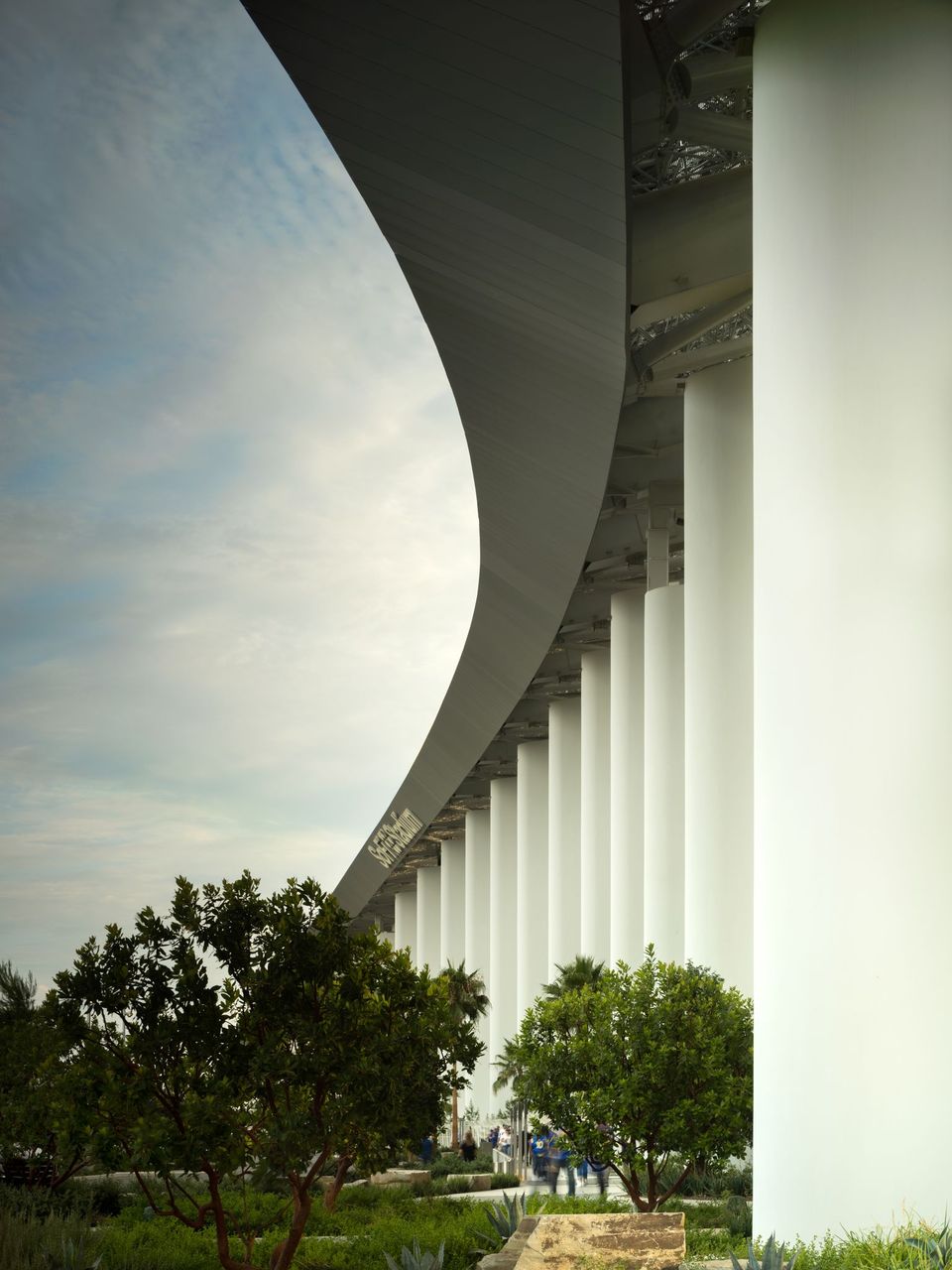
The towering pillars outside of SoFi Stadium act as shock absorbers in the event of an earthquake. (Nic Lehoux/HKS)
Another utility for the shell’s construction centers around its ability to act as a shock absorber in the event of an earthquake.
SoFi stadium is built on a fault line, so the design team had to take into account the possibility of seismic activity. This ultimately was another key reason for the shell being independently built from the seats.
“The other unique feature and challenge as it related to the design of SoFi was there’s actually an active fault line that runs throughout our site,” Evans said. “It became an engineering challenge and our solution was to separate the roof structure from the stadium. We did that with what we call a ‘seismic moat.’ It goes around the entire perimeter of the stadium and allows for the structures to move independently in a seismic event.”
The “seismic isolators” that act as the base of the stadium’s shell can be seen throughout the stadium, although to the unsuspecting fan, they appear as tall pillars that blend with the rest of the stadium’s architecture.
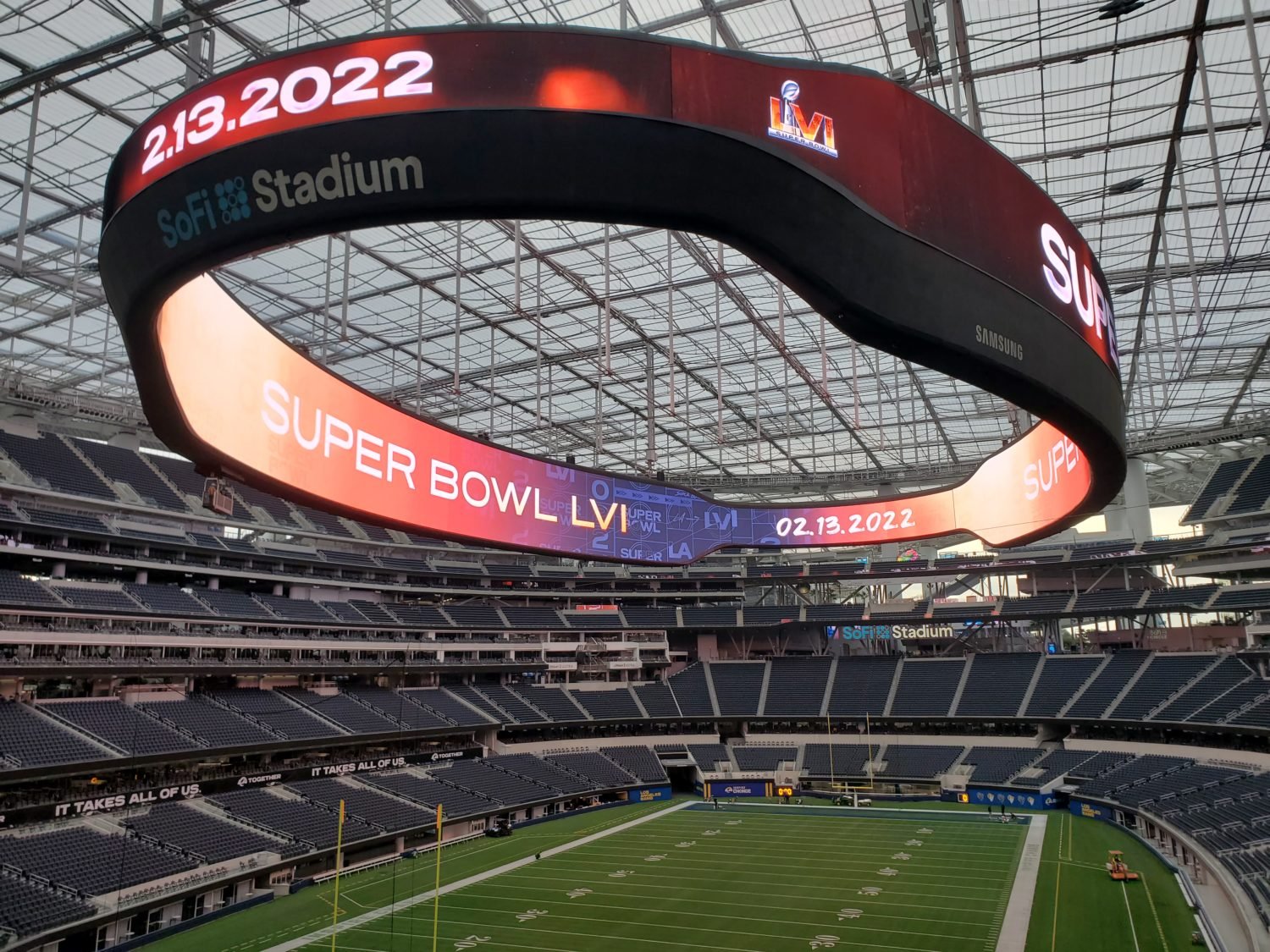
The Samsung Infinity Screen displaying the Super Bowl LVI banner. (Isai Rocha/L.A. Weekly)
Once you move past the grandiosity of the roof and start making your way inside the stadium, you’re immediately greeted by the 70,000-square-foot Samsung Infinity Screen hovering 122-feet above the entirety of the 100-yard football field.
The Infinity Screen is the largest video board in the league, projecting 4K images not only on the out surface, but inner surface, as well.
“Ultimately it goes to improve and enhance and make the very best fan experience possible at SoFi Stadium,” Jason Gannon, managing director at SoFi stadium, said about the board. “Really, for the 4K technology to be deployed in that 70,000-square-foot video board is unique and is one-of-a-kind in live sports.”
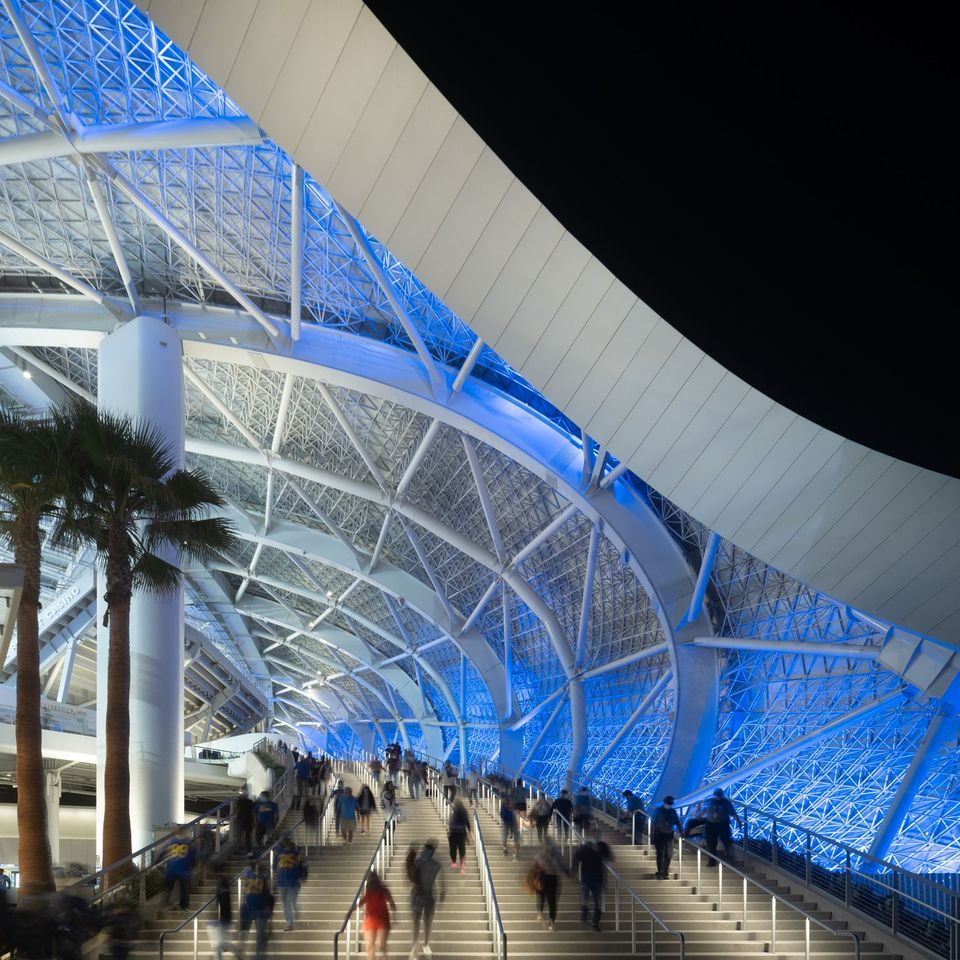
(Nic Lehoux/HKS)
While so much detail went into the construction of SoFi Stadium, it still is only one of the early phases of planning for the 300-acre property owned by Hollywood Park. Construction is underway for an 800,000-square-foot retail and residential project slated for the area. The final piece of the project will consist of 25 acres worth of public parks.
“When designing Hollywood Park, it was critical for us to have open spaces that the community could utilize year-round,” Gannon said. “We want the project to be a true gathering space for sports entertainment, but also for the public community’s use.”
Advertising disclosure: We may receive compensation for some of the links in our stories. Thank you for supporting LA Weekly and our advertisers.

